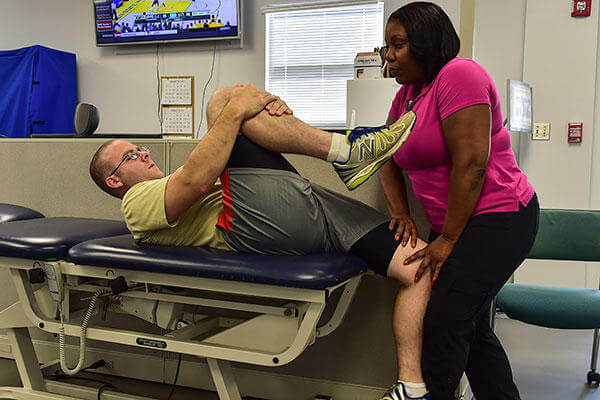While opportunities abound for physical therapy (PT) professionals, hiring managers often review piles of resumes to fill just one opening. Make sure yours makes the final cut by following these tips and reviewing this sample resume for a PT.
Take Stock
Before you create or revamp your resume, research advertised PT positions on Monster. This effort will give you insights into the skills, experience, credentials and traits employers are seeking. Do job ads repeatedly mention requirements such as graduation from a CAPTE-approved degree program, acute-care experience or a background in pediatrics/geriatrics?
Take note of both hard skills (e.g., "experience assessing active and passive range of motion") and soft skills (e.g., "energetic team player" and "excellent interpersonal skills"). Once you know what employers want, use this information as a blueprint to develop your resume. Feature your matching qualifications prominently in your resume; don't assume employers will know these details just from looking at your job title, degree or place of employment.
Related: Does your resume pass the 6-second test? Get a free assessment.
Summarize Your Strengths
Kick off your resume with an opening paragraph featuring your key strengths and most desirable qualifications. In the Monster Resume Builder, incorporate your summary into the Objective section. Your summary might include degrees, certifications, years of experience, types of patients you have worked with, specialty expertise or personality traits.
Here's an example of a profile for a registered physical therapist:
Qualifications Profile: Licensed physical therapist with five years of experience providing inpatient and outpatient rehabilitative services for infants, children, adults and geriatric patients. Honors graduate of CAPTE-approved master of science in physical therapy (MSPT) program. Additional credentials include BLS (basic life support) and CPR certifications. Team player with a reputation for excellent patient-communication skills and proven strengths managing high-volume caseloads in acute-care settings.
Think Like an Employer
When you write your resume, try to think like an employer would. Hiring managers want to know not only what you have done, but also how well you have performed. As you write your Work History section, emphasize your responsibilities and key contributions so employers can quickly grasp the depth and breadth of your experience. Include details such as:
- Patient success stories
- Work setting (e.g., acute care, small medical group, outpatient)
- Caseloads you managed
- Types of rehabilitative treatments/modalities you administered
- Technology/equipment you used
- Contributions you made toward PT program improvement
- Recognition you received for outstanding work performance
Show Your Dedication to the Field
Membership in professional associations such as the American Physical Therapy Association (APTA), industry leadership roles and volunteer activities help demonstrate that you are committed to the field. Be sure to detail all of your industry activities in an Affiliations section.
Related: Search for physical therapy jobs.
Include Keywords
Keywords are search terms employers use to weed through resume databases. Your resume should include physical therapy-related keywords to ensure it is found in an electronic applicant search. Examples of keywords include job titles, degrees, certifications, professional organizations and skills/areas of specialty (e.g., patient assessment, muscle re-education, geriatrics). If a keyword has a widely used acronym, include both the abbreviated and spelled-out forms somewhere in your resume since an employer may use either during a search.
Target Your Resume
Your resume must immediately grab an employer's interest if it is to survive the initial screening process. Customize your resume each time before you send it out. Modify your Objective/Qualifications profile to specifically address the employer's needs.
By showing exactly how you would contribute to an employer's team, your resume will stand out from the crowd.
Related: For the latest veteran jobs postings around the country, visit the Military.com Job Search section.
The Next Step: Get Your Resume Out There
Get your resume seen by companies that are seeking veterans like you. Post your resume with Monster.com.











